The Body Beautiful - Page 2
What Fisch and her compatriots were producing, Rhoades says, was more than decoration. “It was miniature sculpture that was portable.”
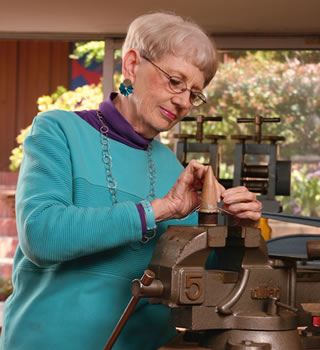 |
|
|
After a while, though, both Fisch’s art, and to a lesser extent Renk’s, grew a lot less miniature. By the 1960s, draped over the chest or dipping below the waist, Fisch’s work became part of a movement towards ‘body sculpture,’ or ‘wearable art.’ She prefers the term ‘body ornament.’
Libby Cooper, co-owner of Mobilia Gallery in Cambridge, Massachusetts, which sells work by both Fisch and Renk, says studio jewelers were influenced by such art movements as Cubism and Constructivism.
“Instead of painting or sculpture, they made jewelry, and it was art. It was an expression that came from the heart. It was their soul,” Cooper says. “They would make it whether people bought it or not.”
Renk, who studied at the Institute of Design in Chicago, a school founded by alumnae of the Bauhaus, emphasizes that her training was in the fine arts, not jewelry production. “Our training was not in the workshops,” she says of studio jewelers, “where you do nothing but polish for ten years before going on to next step.”
Renk, who has lived in San Francisco since 1948, began as a painter and later returned to painting, while also creating larger sculptures during her career as an artist.
Fisch, a San Diegan since 1961, cites as among her influences the jewelry of the modern sculptor Alexander Calder and the Surrealist jewelry of the New Yorker Sam Kramer. “I found it much more intriguing than what was generally available in a jewelry stores,” she says.
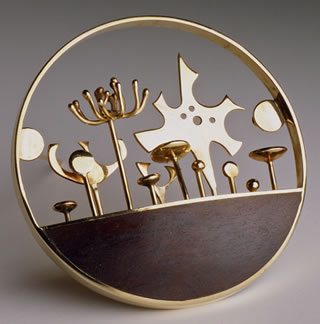 |
|
|
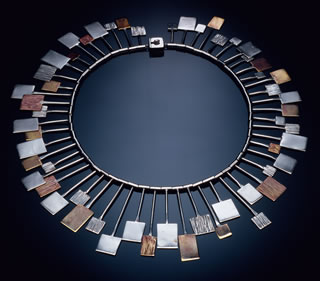 |
|
|
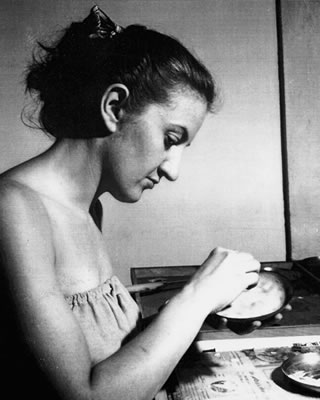 |
|
|
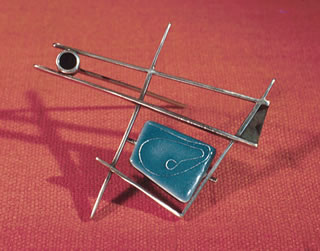 |
|
|
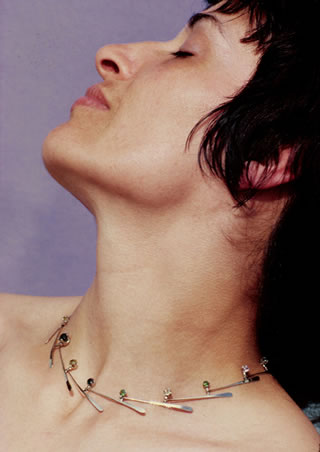 |
|
|
Fisch began as a ceramicist and switched to jewelry because, as she recounted in an oral history, “I went looking in the community for a place to work, and what I found were jewelry studios…” Uninspired by “what you would see in jewelry stores,” she fell in love instead with imposing Egyptian and pre-Columbian ceremonial pieces.
“Over the years,” Fisch said in her oral history, “I have studied the ornaments of many ancient cultures which approach human adornment with freedom and dramatic power which is, perhaps, not possible in contemporary society.”
Fisch’s work, so daring and bold and often sexy, reflects the spirit of the woman herself.
“She’s very striking,” Rhoades says. “She’s very colorful in her dress; she loves bright color; very much the sixties. Her jewelry is a badge and it sets her apart.”
Fisch’s San Diego bungalow is almost as famous locally as her art, whose spirit it evokes. “Her house, it’s all turquoise and hot pink and orange, purples,” Cooper says. “It’s everything, the fabric, it’s just fantastic.”




